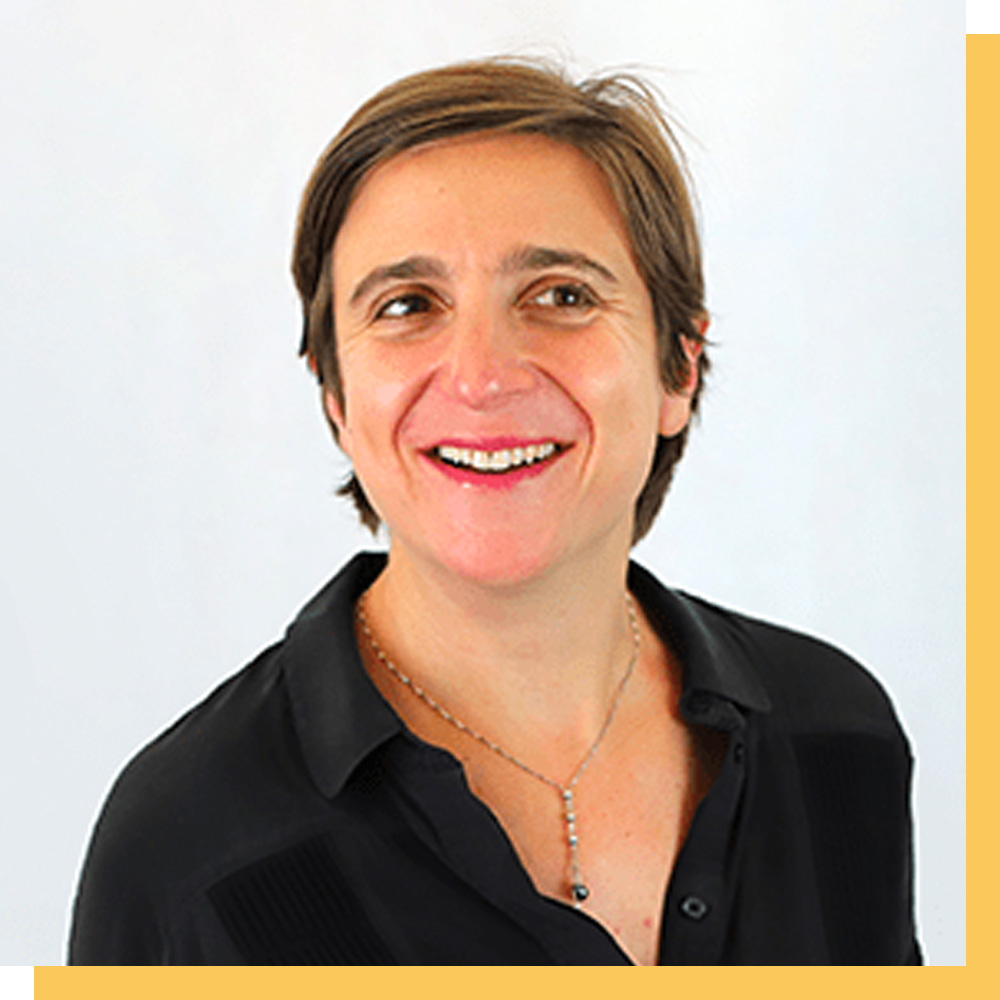Talking Sense
An interview with Anne Gerset, Investment Director of makesense, takes us on a journey from risk to reward.

Founded in 2013 by women entrepreneurs, makesense is a French non-profit organisation that supports citizen engagement with environmental and social challenges, and offers an incubator for pioneers building companies that address them.
With its main investment focus in France, their impact investing activities grew from experiences of the 300-plus organisations who have been supported within the incubator, particularly targeting the lack of financing available to early-stage impact ventures. This background means that extra-financial support (and connections) are built into makesense’s approach to investing.
Leading the charge in makesense's catalytic investments is Anne Gerset, Fund Director, who has played an instrumental role in institutionalising impact values to the organisational structure and governance. Together with her team, she has demonstrated great commitment in supporting early-stage projects, contributing to the investee's trajectory toward mainstream financial capital.
What inspired the creation of the makesense Seed I fund, tailored for early-stage enterprises? How is the fund design to mitigate the inherent risks associated with this initial phase?
Finance for early-stage impact ventures remains a major challenge throughout the world. Some of the most exciting, potentially transformative, impact enterprises continue to struggle for access to capital, especially when the founders are women, from global majority ethnicities, or other marginalised groups.
Makesense’s pioneering seed fund was launched in 2019 to address precisely this gap, by offering pre-seed impact finance. It encompasses a diverse range of sectors, including autonomy, old age and disability, agriculture and food, resilient cities and circular economy, social inclusion, as well as education, training and employment.

Two specific features allow makesense to finance innovative start-ups that both respond to urgent social and environmental issues and have a long-term vision. These features also support in risk-mitigation. The first is the formative due-diligence phase that draws on the insight and expertise of the organisation’s incubator. This offers access to a support program to accelerate the start-up prior to possible finance. The second is a reinvestment capacity during a second follow-on round. Over 70% of investees have been able to access this so far, considerably higher than the original projection of 50%, thanks to the quality of investees and their impact. Both features speak to the close support for entrepreneurs from the very first discussions.
Notably, a quarter of makesense Seed I investees, originating from the incubator, exemplify the success of a diverse deal-sourcing strategy that engages partners and wider networks. This strategic approach has been instrumental in supporting early-stage ventures through makesense Seed I, where investments range between €100k and €500k in pre-seed and seed rounds.
The success of makesense Seed I fund drew interest from significant players in France, paving the way for Racine2. What's the aim of this fund, and how does it differ from makesense Seed I in supporting early-stage ventures?
The Racine2 fund, launched in early 2023, is co-managed with Serena, which deploys funds from French healthcare company MGEN. The fund aims to take the next step in supporting companies built on integrated social and environmental impact within their business model.
This initiative represents a new opportunity for makesense to push forward the impact investing sector.
What sets Racine2 apart is the unique collaboration between an impact expert and a traditional venture capital investor which allows the team to have an authentic approach on impact topics while applying scale-up patterns.
The team has set a solid impact approach, including activities such as writing an impact mission into articles of association, developing impact indicators and establishing an alignment roadmap to safeguard the mission of supported companies.
The fund’s investment areas are focused on developing physical and sports activities, promoting accessible outdoor activities, enhancing daily lifestyles through well-being solutions, safeguarding the environment and ensuring accessible education for all.
Carried interest is intrinsically tied to impact criteria, creating ongoing incentives for supported ventures to prioritize their social and environmental missions throughout their development.
Why is makesense’s role catalytic? How does the organisation prioritise impact additionality over financial return in its funding strategies?
By embracing risk, offering flexibility and bringing patient capital to early-stage ventures, the goal of being catalytic really resonates with makesense. You have a catalytic impact from the beginning, in terms of the leverage effect of future finance whether it is equity, debt or grant.
In addition, at least some of the funding that makesense offers aims for the impact additionality of catalytic capital: putting impact first and financial return second. We pursue this through several strategies.
The management fees on the €8.2 million makesense Seed I are not sufficient on their own to fund the management team. But intensive engagement is clearly essential to the model of the fund, leading to high transaction costs (as much as one third of the fund). Makesense has covered these costs in two ways. Firstly, and absolutely key, is funding from the European Union. Here grant funding is highly catalytic and an existential subsidy that enables the model. Furthermore, makesense Seed I is backed by makesense’s incubator, which offers tools, resources and people that the fund can draw on. Such synergies create important efficiencies.
Now, makesense is looking to go further. A larger fund will enable the organisation to focus on opportunities with the highest impact return. By combining 10% focussed on high social impact but low financial return, with 90% targeting impact and return equally, we can still offer an average return to limited partners. This 10% can be more catalytic. We don't need more money to be financially sustainable, but we need more money to have, I think, the right balance for impact.
What structures do you have in place for impact measurement and management?
Within makesense Seed I, makesense has adopted a structured impact measurement and management process with four stages for any investment. This includes screening against 20 impact targets, conducting due diligence against six key criteria, development of up to three key impact indicators, and exiting with up to 100% carried interest based on the indicators. Often, there is a great synergy between operational key performance indicators (KPIs) and the impact that makesense target and support through their indicators.
To take one case, La Consigne GreenGo (now BIBAK) is a company that is reinventing takeaway consumption with a sustainable food container system. It replaces the huge wastage of plastic from a trip to a fast-food outlet, for example, with a reusable alternative. This can clearly be connected to plastic and CO2 avoided, by tracking the number of reusable containers in the system. This becomes one of makesense’s KPIs. However, a second KPI was required to ensure that people did not merely take non-plastic alternatives but actively reused them. For this reason, they also measured the percentage of containers returned, with a target of 80% to ensure that a circular economy has really been instigated. Combined, the two KPIs offer a much better picture of changed behaviour and therefore positive impact.
More systemically, investees have consistently drawn attention to makesense’s capacity to tackle operational issues of pioneering enterprises and connect entrepreneurs to a wide ecosystem of financial partners. Follow-on funding, for example, is a clear signal to other investors and therefore an effective means of leverage.
Racine2 will offer an opportunity to turbocharge this systemic impact, because it combines makesense's impact knowledge and network, with Serena’s large and active community of entrepreneurs and venture capital providers.
What are the key learnings in makesense’s journey you would like to highlight?
The main message of makesense is about how you pursue impact. For us these values have to be enshrined in the organisation, in governance. I would also raise the opportunity of working within an ecosystem, and connecting with others. This includes financial partners and other experts. Financial and extra-financial support are really important.
Investing in early-stage impact ventures is an ideal opportunity to have a catalytic impact because you are part of investees journey toward more mainstream financial capital. This is part of our DNA.
*
This interview resulted from a collaboration between Impact Europe (formerly EVPA) and the Impact Hau research team at the University of Bologna, exploring how catalytic capital can be used to address social and environmental issues. Read the Catalysing Impact report to learn more!

